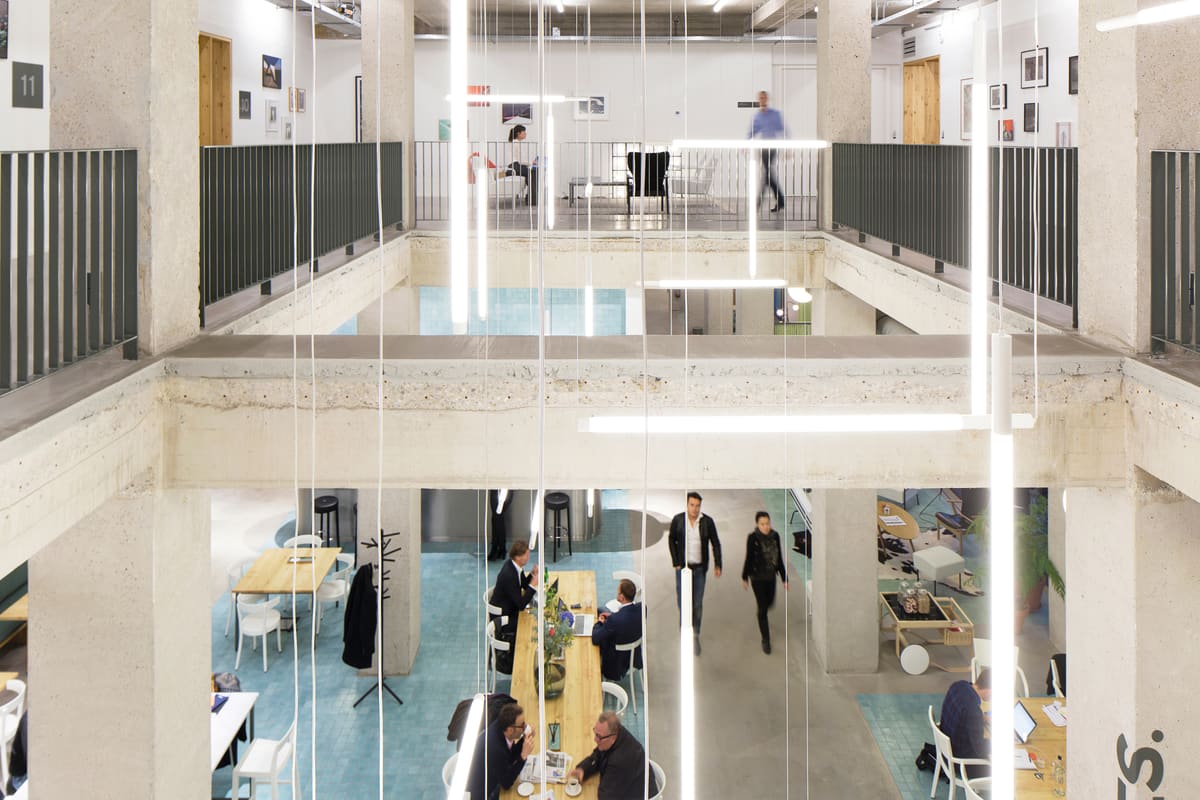Flexible working is closer to celebrating its 30th birthday than its 10th. Advances in technology and societal trends mean it has been a possibility for workers for decades. Yet, while this is not new, the last 10 years have seen working flexibly become widely accepted, and even demanded. From top-down policy changes to the war for talent, employers have been motivated to offer more flexible working opportunities to their employees. And yet, this has not been a one-way journey.
People power driving change
Undoubtedly one of the biggest drivers in flexible working and flexible workspaces has been technology. The internet, mobile phones and portable laptops began the trend for remote working as early as the 90s. In the last 10 years, however, improving internet speeds and better-quality video conferencing facilities mean offsite employees can communicate with colleagues face to face while miles apart. With 5G on the horizon, plus futuristic tech like robotics and augmented reality entering the common workplace, soon it really will be like your colleagues on the other side of the world are in the room with you.
It’s not just new technologies that have helped the rise of flexible working. Employees are increasingly demanding the option from their bosses. While the gap between men and women in the workforce has narrowed considerably, caring responsibilities still largely sit with women. According to the UK’s Office of National Statistics (ONS), men will on average do 16 hours of unpaid work a week, including child care, laundry and cleaning. This compares with 26 hours of unpaid work a week performed by women. However, society at large is calling for ways to close the gender employment gap even further. Flexible working is one possible solution, allowing those with caring responsibilities to better balance work and home life. Smart businesses are introducing policies to help this section of society by opening-up the possibility of flexible working.
It’s not just workplace policies either. The UK Government introduced top down policy back in 2003 so that parents and carers had the 'right to request flexible working'. Since then the legislation has been updated to include all employees with at least 26 weeks' continuous employment, regardless of parental or caring responsibilities.
Workers have been further supported in the call for flexibility by a global competition for talent. As the world continues to move towards a skills-based economy, businesses are in competition to attract and retain the best people for the job. A McKinsey Global Institute study found that employers in Europe and North America will require 16 million to 18 million more university-educated workers in 2020 than are going to be available. It’s forecast that companies will be unable to fill up to one in ten roles. As a result, the power balance in employment contract negotiations has been shifting towards employees and many are now comfortable requesting working patterns that better suit their lives outside of work.
Why we increasingly want to work flexibly
Of course, there are trends that are influencing the drive for people to want to work flexibly too. For one, there is a growing push for people to seek out better work-life balance. As the impacts of stress and burnout on our mental health become better understood, and the wellness movement generally encourages people to take better care of their physical and mental wellbeing, people are looking for employment that matches their desire for professional and personal balance. With commuting often called out to be one of the most stressful parts of people’s day, many are looking for opportunities to work from home, or an office in a more convenient location.
Another trend influencing the desire to work away from the main office in city centres is the increasing cost of living. Rent in a city can be considerably more than suburban living. Add on travel costs and you can see why many are choosing to work in locations outside of metropolitan centres.
Business benefits
The last 10 years has empowered more employees to push for flexible working practices, but this alone isn’t behind the huge growth we have seen. A real driver of change has been the awakening by business in seeing the commercial benefit of flexible workspaces.
Our Global Workspace Survey found that employers increasingly recognise the benefits to their business from offering flexible working strategies to their employees. Nine in 10 (89 per cent) believe it helps their business grow, 87 per cent see it as increasing their competitiveness and 82 per cent say it improves productivity.
It’s not just the hard pounds and pence that businesses are responding to, though. It pays to be good. Flexible working attracts diverse workforces, which has been shown to have commercial benefits. Companies in the top-quartile for gender diversity on executive teams are 21 per cent more likely to outperform on profitability and 27 per cent more likely to have superior value creation1.
Likewise, attracting and retaining the best talent is directly aligned to a business’ success. Figures from an Oxford Economics report has shown that it can cost up to £30,000 to replace an individual employee. Yet, 80 per cent of business leaders say that flexible working helps them retain top talent and two in three (64 per cent) are now offering flexible working to aid recruitment strategies.
Flexible working today
IWG’s Global Workspace Survey found that today 70 per cent of employees are working at least one day a week somewhere other than the office. More than half (53 per cent) of employees work remotely for half of the week or more, whilst one in 10 (11 per cent) work outside of their company’s main office location five times a week.
This isn’t something that is the preserve of small or start up businesses either. The world’s most successful companies including Etihad Airways, Diesel, GSK, Mastercard, Microsoft, Oracle and Uber are already adopting a flexible workspace approach.
While flexible working as a concept is much older than 10 years, what the last decade has demonstrated is an increasing acceptance of this way of working. Society has evolved since 2009 and employees feel more empowered to demand working practices that suit them.
Yet, this is not an example of people power changing business. Instead, forward thinking organisations recognise the commercial benefits of flexible working. Those same organisations are also alert to the benefits of being a supportive employer providing appropriate work-life balance.
What the last 10 years has really proven is that flexible working and workspaces are not a flash in the pan. If anything, we expect this to become the normal course of business.
View our flexible workspace solutions






